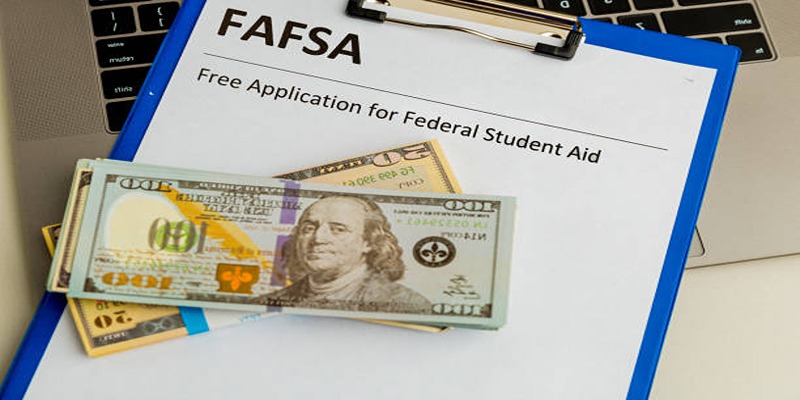Your Essential Guide to Completing the FAFSA with America Saves
Aug 30, 2024 By Georgia Vincent
Completing the Free Application for Federal Student Aid (FAFSA) is a crucial step for students seeking financial assistance for college or university. The FAFSA determines eligibility for federal grants, loans, and work-study programs, making it an essential process for offsetting the costs of higher education. With the support of America Saves, students and their families can gain valuable insights into the FAFSA process, ensuring they navigate it effectively and maximize their financial aid opportunities. This guide aims to provide a comprehensive overview of key steps, tips, and resources to simplify the FAFSA completion journey. By understanding each component, students can focus on their academic goals while securing the funding they need to succeed.
Understanding the FAFSA Process:

The FAFSA process can initially seem daunting, but breaking it down into manageable steps can significantly ease the experience.
- Students must gather necessary documentation, such as Social Security numbers, tax returns, and information about income and assets. This information will be integral when filling out the application.
- Applicants should create an FSA ID, which serves as a unique identifier for sign-in purposes and to electronically sign the FAFSA form.
- Once prepared, students can complete the FAFSA online, where they will encounter various sections designed to collect detailed information about their financial situation.
- It's important to be accurate and honest in reporting, as discrepancies can lead to delays or loss of eligibility for aid.
- After submission, students should follow up by checking their Student Aid Report (SAR) to confirm the information is processed accurately and to identify any further steps needed to secure aid.
Key Deadlines to Remember
Staying aware of key deadlines is essential for a smooth FAFSA completion experience.
Federal Deadline
The federal deadline for submitting the FAFSA typically falls on June 30th of the academic year for which aid is being sought. It's crucial for students to submit their applications before this date to be considered for federal financial aid programs. Submitting the application early can also increase the chances of receiving additional state and institutional aid.
State Deadline
Many states have their own deadlines for financial aid applications, which can differ significantly from the federal deadline. Some states process financial aid on a first-come, first-served basis, which means that applying as early as possible can make a difference in the amount of aid awarded. Students should research their specific state's deadlines and ensure their FAFSA is submitted in a timely manner to be eligible for state grants and scholarships.
Institutional Deadlines
In addition to federal and state deadlines, individual colleges and universities may have their own financial aid deadlines. These deadlines can vary, especially for institutions that award aid based on financial need. Students should check the financial aid sections of the websites of the schools they plan to apply to, ensuring all necessary forms are completed on time to maximize their aid offers.
Renewal Deadlines
For students who are reapplying for financial aid in subsequent years, it's important to keep in mind the renewal requirements and deadlines. Generally, the FAFSA must be completed every academic year, and students should aim to submit their renewal applications as early as possible to avoid missing out on available funds. This not only maintains eligibility for federal aid but also positions students favorably for state and institutional assistance as well.
Common FAFSA Mistakes:
Completing the FAFSA accurately is essential to ensuring students receive the maximum amount of financial aid possible. To help avoid pitfalls, here are some common mistakes to watch out for:
- Not using the correct Social Security number (SSN)
- Missing or incorrect tax information
- Leaving fields blank that should be completed
- Failing to sign the FAFSA form
- Forgetting to list all schools the student is applying to
- Not reviewing the Student Aid Report (SAR) for errors
- Assuming parents do not need to provide information if the student is independent
- Ignoring state and institutional requirement differences in the application process
Tips for Successful Applications
To ensure a successful FAFSA application, it's crucial to be well-informed and prepared. Here are some important tips to guide students through the process.
Start Early
Beginning the FAFSA application process as soon as possible can significantly increase your chances of receiving the maximum financial aid available. Early submission not only allows ample time for gathering necessary documents but also gives students the opportunity to address any potential issues before deadlines approach.
Keep Track of Documentation
Organising required documents ahead of time is vital for a smooth application experience. This can include tax returns, W-2 forms, and records of untaxed income, as well as bank statements and information about investments. Being diligent in collecting these documents will help reduce errors and ensure accurate reporting on the FAFSA.
Use the IRS Data Retrieval Tool
The IRS Data Retrieval Tool (DRT) can simplify the process of entering tax information into the FAFSA form. This tool allows applicants to link their FAFSA directly to their tax returns, reducing the risk of errors and streamlining the application process. Using the DRT can also help expedite verification if required later.
Review Your Application Thoroughly
Before submitting the FAFSA, take the time to review all the information provided. Errors in social security numbers, tax information, or school listings can lead to complications or delays in receiving aid. A careful review allows students to make necessary corrections and ensure their application is complete.
Stay Informed About Aid Offers
After submitting the FAFSA and receiving a Student Aid Report (SAR), students should compare offers from different institutions. Understanding the types of financial aid awarded (such as grants, loans, or scholarships) and any associated terms or conditions will help in making informed choices about where to attend.
Seek Help When Needed
The FAFSA process can sometimes be complex, and students shouldnt hesitate to seek assistance if they encounter challenges. Resources such as America Saves, school financial aid offices, or online FAQs can provide valuable guidance. Additionally, talking to trusted family members or friends who have experienced the process can offer further insights.
Resources for Additional Help

Finding additional resources can significantly enhance students' understanding of the FAFSA process and their opportunities for financial aid. Here are some helpful resources to consider:
- FAFSA Official Website: fafsa.ed.gov for the most accurate and up-to-date information.
- Federal Student Aid: A resource for information on federal financial aid programs and processes.
- National Association of Student Financial Aid Administrators (NASFAA): Offers guidance and advocacy for financial aid professionals.
- College Board: Provides comprehensive tools and information about financial aid, including scholarships and college planning.
- Your Schools Financial Aid Office: A resource for personalized assistance and information tailored to your institution's requirements.
Conclusion:
Completing the FAFSA application is a crucial step for students seeking financial aid to help fund their education. By understanding deadlines, avoiding common mistakes, and being well-informed about available resources and tips, students can successfully navigate the process and maximize their opportunities for receiving aid. With careful preparation and diligence, the FAFSA can be completed accurately and efficiently, helping pave the way for a successful academic journey. So it's important that students take advantage of all available resources and stay informed throughout the entire process.







